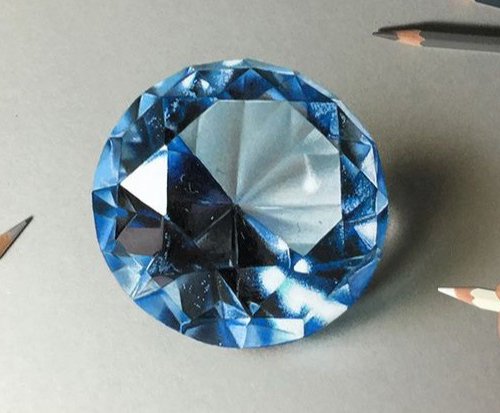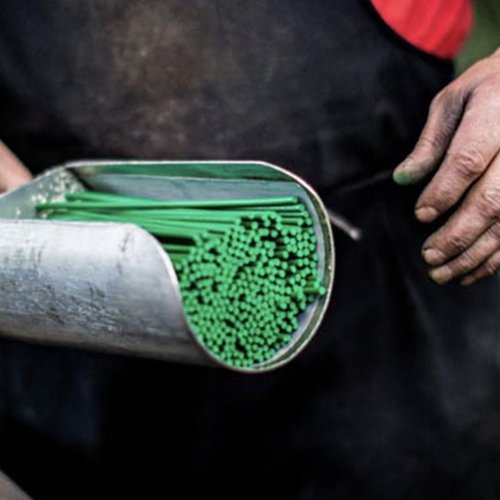The History of Colored Pencils: A Journey Through Time

Hello there, fellow art enthusiasts! I'm glad you stopped by to learn more about one of my absolute favorite art mediums: colored pencils.
I've been working with these tools for the better part of my life, and I can't wait to share their history with you.
So grab a cup of tea, sit back, and let's dive into the colorful world that is the history of colored pencils.
The Early Days: Wax Crayons and Oil Pastels
Before we jump into the history of colored pencils, it's important to take a quick detour into the world of wax crayons and oil pastels. You see, these two art mediums played a significant role in the development of colored pencils.
Wax Crayons
Wax crayons have been around since the time of the ancient Egyptians, who used beeswax mixed with colored pigments to create vibrant, colorful art. In the 19th century, the industrial revolution led to the development of more affordable and accessible wax crayons. These early crayons were primarily used for coloring maps and technical drawings.
Oil Pastels
Oil pastels, on the other hand, can be traced back to the early 15th century, when artists like Leonardo da Vinci began experimenting with pigments mixed with oil and wax. By the 19th century, oil pastels were used by artists such as Edgar Degas and Mary Cassatt.
The Birth of the Modern Colored Pencil
Now that we've covered the foundations, let's jump into the history of colored pencils as we know them today. It all began in the early 20th century with the invention of the first modern colored pencils.
The Invention of the Colored Pencil
In the early 1900s, a German company called Faber-Castell introduced the first colored pencils designed specifically for artists. These pencils featured a wax-based core that allowed for smooth, vibrant colors. The success of Faber-Castell's colored pencils led other manufacturers to develop their own versions, and the colored pencil as we know it was born!
Key Innovations in Colored Pencil Technology
Over the years, there have been several key innovations in colored pencil technology that have helped make them the versatile and beloved art medium they are today.
Oil-Based Colored Pencils
In the mid-20th century, a Swiss company called Caran d'Ache introduced oil-based colored pencils. These pencils featured an oil binder, which allowed for a smoother, creamier consistency compared to their wax-based counterparts. This new innovation gave artists more control over their work, allowing for greater precision and detail.
Watercolor Pencils
In the late 20th century, watercolor pencils burst onto the scene, offering artists a whole new way to work with colored pencils. These unique pencils featured a water-soluble binder, which allowed artists to create stunning watercolor effects simply by applying water to their drawings.
Lightfastness Ratings
As colored pencils continued to gain popularity, artists began to demand higher-quality materials that would stand the test of time. In response, manufacturers started to develop colored pencils with improved lightfastness ratings, ensuring that their colors would remain vibrant and true even after years of exposure to light.
The Evolution of Colored Pencil Techniques
As colored pencils have evolved over time, so too have the techniques used by artists. Let's take a look at some of the most popular colored pencil techniques that have developed throughout history.
Layering
Layering is a technique that involves building up multiple layers of colored pencil to create depth, texture, and luminosity. This method has been used by artists since the early days of colored pencils and has become a staple in many artists' repertoires. By carefully applying layers of color, artists can create incredibly realistic and detailed drawings that rival paintings in their complexity and beauty.
Blending
Blending is another technique that has become popular among colored pencil artists. This method involves smoothing and merging colors together to create seamless transitions and gradients. There are several ways to blend colored pencils, including using a colorless blender pencil, a blending stump, or even a fingertip. Some artists also use solvents like rubbing alcohol or mineral spirits to help break down the pigment and create a smoother blend.
Burnishing
Burnishing is a technique that involves applying heavy pressure to the colored pencil to create a polished, shiny surface. This method can be used to create a range of effects, from adding highlights to a drawing to giving a piece a more painterly, finished look. Burnishing can be done using a colorless blender pencil, a white colored pencil, or even a metal tool like a spoon or burnisher.
Underpainting
Underpainting is a technique that involves laying down a base layer of color before applying the colored pencil. This method can be particularly useful when working with watercolor pencils, as the underpainting can help to establish the overall tone and mood of a piece before adding detail with colored pencils. Underpainting can also be used with traditional colored pencils to help create a more dynamic and vibrant drawing.
The Colored Pencil Community Today
Today, the colored pencil community is thriving, with artists around the world embracing this versatile and accessible art medium. There are numerous online forums, social media groups, and even dedicated colored pencil societies where artists can share their work, exchange tips and techniques, and celebrate the joy of creating with colored pencils.
Colored Pencil Brands
As the popularity of colored pencils has grown, so too has the number of high-quality colored pencil brands on the market. Some of the most well-known and respected brands include Faber-Castell, Caran d'Ache, Prismacolor, Derwent, and Staedtler. These companies continue to innovate and develop new colored pencil technologies, ensuring that artists have access to the best materials possible.
Colored Pencil Competitions and Exhibitions
The rise in popularity of colored pencils has also led to an increase in colored pencil-specific art competitions and exhibitions. Organizations like the Colored Pencil Society of America (CPSA) and the UK Coloured Pencil Society host annual exhibitions and competitions that showcase the incredible talent and skill of colored pencil artists from around the world.
In Conclusion
The history of colored pencils is a fascinating journey through time, filled with innovations and new techniques that have shaped this beloved art medium into what it is today.
From the early days of wax crayons and oil pastels to the modern, high-quality colored pencils used by artists worldwide, the story of colored pencils is a testament to the creativity and passion of the human spirit.
I hope this in-depth look at the history of colored pencils has inspired you to pick up a set and start creating your own colorful masterpieces!





Be the first to comment!
Comments
There are no comments yet.